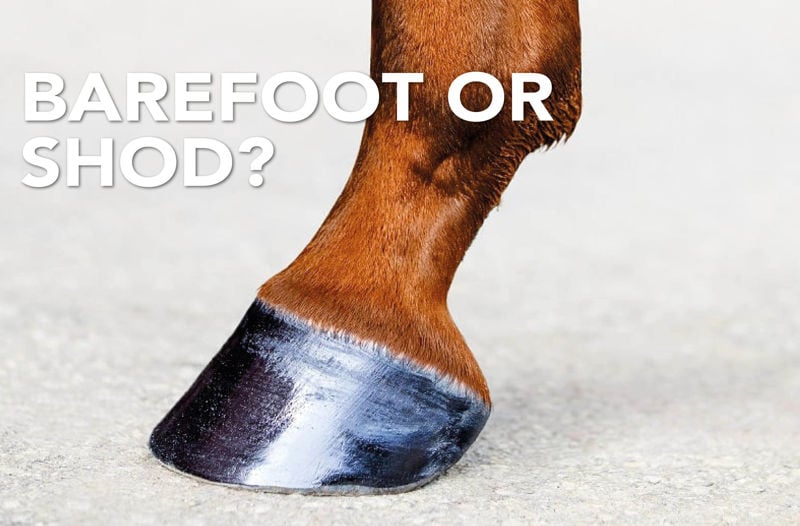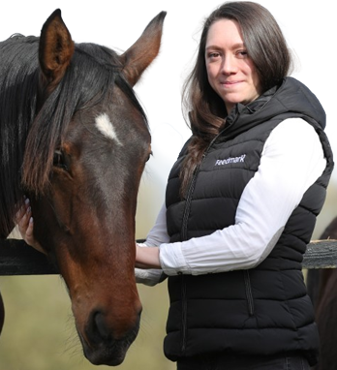Humans have been putting metal shoes on horses for centuries as a way of providing comfort and protection to work horses who would often have to travel for many miles over different terrain. As the demand for the work horse died out and the leisure horse took over, many owners opted to go barefoot.
With each horse having their own individual needs, “To shoe or not to shoe?” can be a tough question to answer! This blog will discuss both management methods to help you make the best decision for your horse.
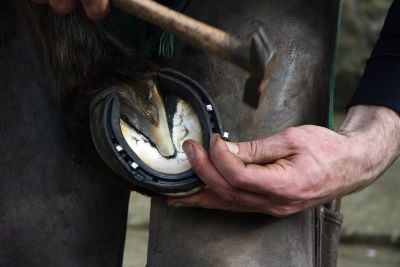
Why are some horses shod?
The hoof may look like a solid structure, but under the hard hoof wall there are many delicate structures just below the surface. History suggests that shoes were first introduced to provide protection to the horse’s feet, something which is still relevant today!
Horses which are in medium to hard work and often work on hard ground and roads may require shoes to reduce wear on the hoof wall.
Some horses also find walking on hard and stony ground to be painful, even resulting in lameness and bruised soles. Shoes can offer protection and reduce lameness caused by bruising, especially in certain breeds such as the Thoroughbred.
Some horses are born with poor confirmation which can predispose them to tendon and ligament injuries. Knowledgeable farriers can supply specific shoes which alter the horse’s gait, meaning that they are applying less pressure to certain structures within the limbs. Certain diseases such as may also require specialist shoeing to provide comfort for the horse.
Common shoe types include:
Concave Horseshoe - This shoe is the standard shoe you would find on the standard shod horse.
Eggbar Horseshoe - The Eggbar shoe is an oval shaped shoe which provides the horse with heel support.
Heartbar Horseshoe - This shoe bears resemblance to a heart shape across the heel and frog of the hoof to provide extra support for these structures.
Glue-on Plastic Shoes - These shoes are fitted to those with sensitive feet who may not be able to cope with the concussive action of a hammer or nails being applied to their feet. They are commonly fitted to those with laminitis.
Shoes can cause the horse to lose grip on slippery ground so they can be fitted with road nails and studs for extra grip.
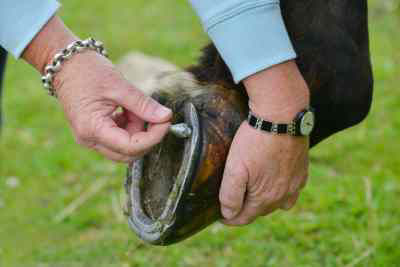
Why are some horses barefoot?
The frog can be found at the base of the foot, this slightly spongy structure can be considered part of the circulatory system, the force applied with each step of the horse causes the hoof to expand and contract, acting as a shock absorber, pushing the blood back up towards the main body of the horse. Certain research suggests that shoes limit the movement of the hoof, thus reducing blood flow to the lower limbs. The increased blood flow can help with injury healing; horses with long-term limb injuries are often turned away with no shoes to allow them to recover quicker.
Going barefoot is certainly a more natural alternative for the horse, it can also work as beneficial for the owner as well because a new set of shoes can cost considerably more than a trim, although it is worth noting that the horse will require trimming more often when barefoot.
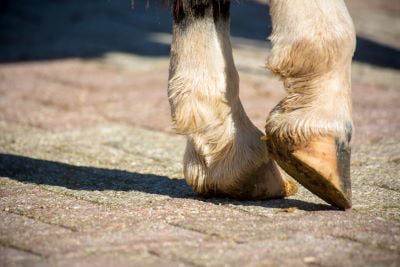
When trimming, your farrier should shape the hoof to improve their gait and help to reduce injury. Improving hoof balance can help to encourage equal wear on the hoof and correct hoof growth. Hooves which struggle over rough terrain when barefoot may benefit from hoof boots. Hoof boots are usually made of plastic and act as temporary shoes to reduce bruising and improve comfort to barefoot horses.
Can a horse go barefoot after wearing shoes?
Transitioning a horse from being shod to barefoot (doesn’t have shoes) needs careful consideration and management and will require the advice of a farrier or barefoot trimmer.
If you decide to transition a shod horse to becoming barefoot, do so gradually and keep them comfortable by ensuring they are walking or standing on soft surfaces as their hooves will need to adapt.
Keep an eye out for any soreness or lameness during the change and you may need to adjust the work they are doing to allow the hooves to adapt and strengthen. This can take months and regular visits from a farrier or barefoot trimmer will be required.
Can my horse have shoes on their forelegs and be barefoot on their hindlegs?
Yes, some horses will only require shoes at the front. Most of the horse’s weight is over their front feet which makes the front hooves more prone to wear and means the front hooves of working horses often need more protection.
Certain types of work i.e., jumping place more weight and strain on the front legs and may compromise hoof health in horses that are barefoot and therefore for these horses front shoes may be beneficial.
Summary
All horses are different, so it is important to look at the horse in front of you before making a decision about shoeing. There are leisure horses who require shoes but equally there are horses in hard work that are not shod so its about looking at the individual and accounting for different factors like confirmation, hoof health, workload etc that will help you make an informed decision.
For any advice or questions you may have about your horse's hoof health, please don't hesitate to reach out to our expert nutrition team. You can call 0800 585525 Monday-Friday 8:30am-5:00pm. Email [email protected], or send us a DM on social media.


